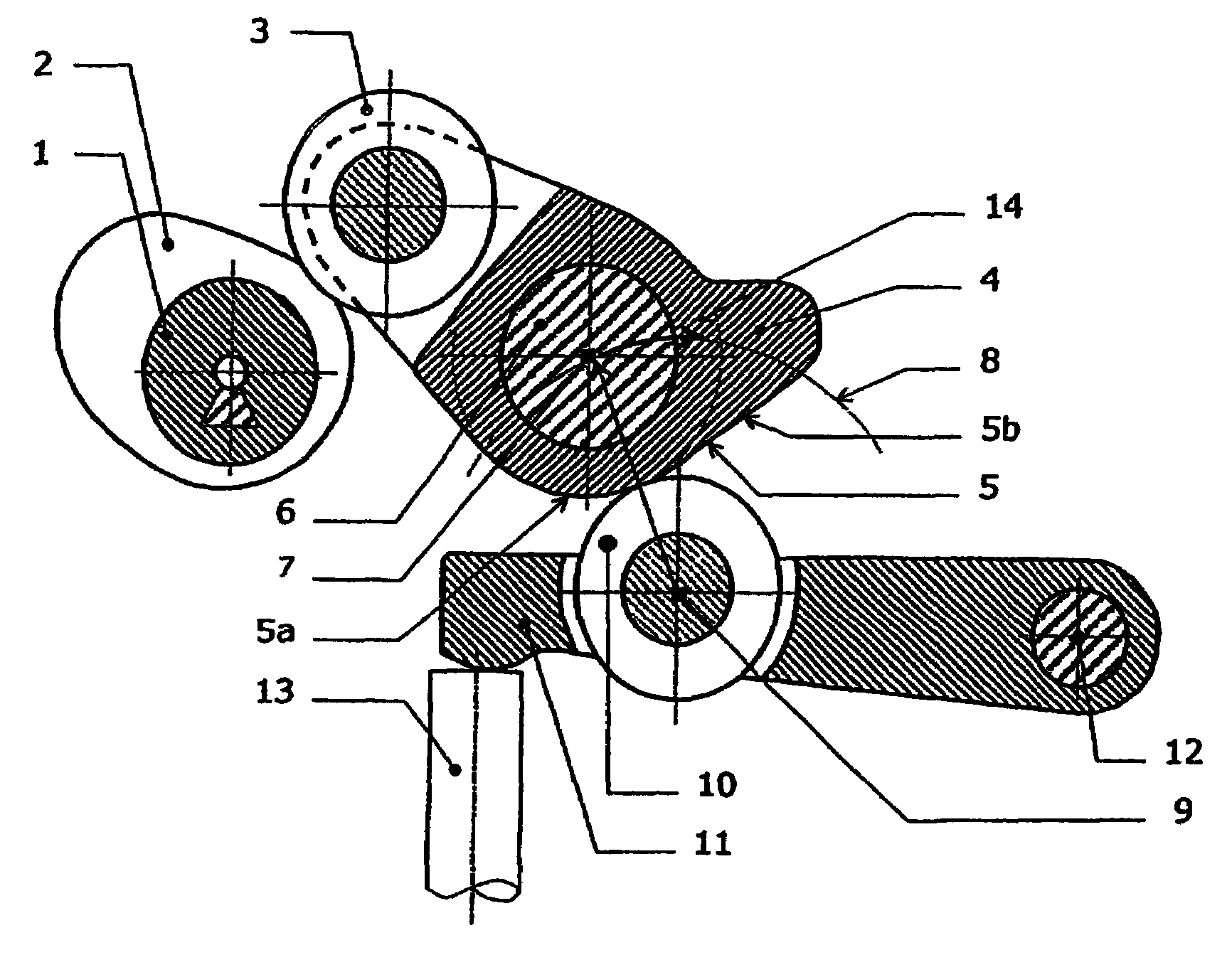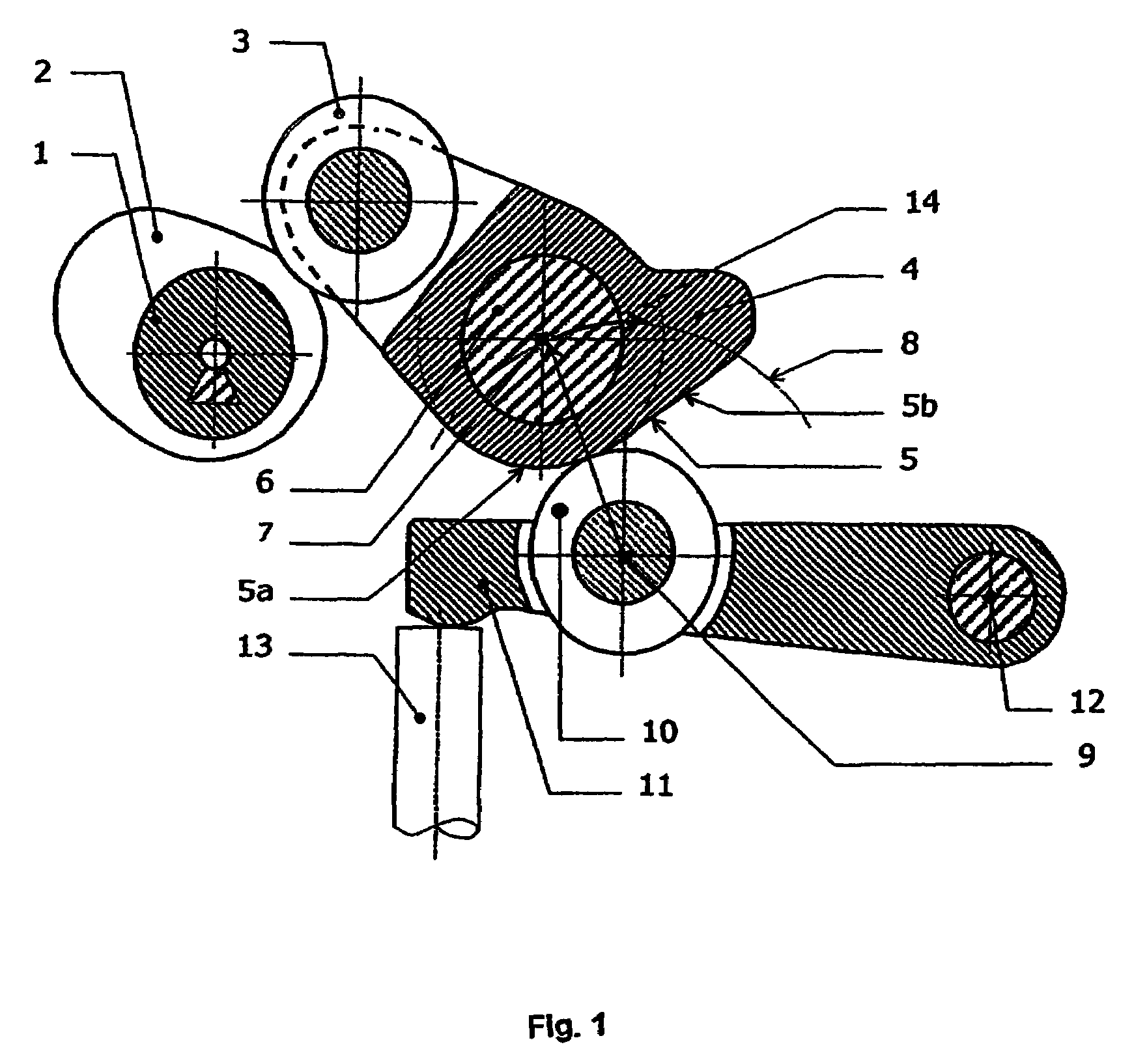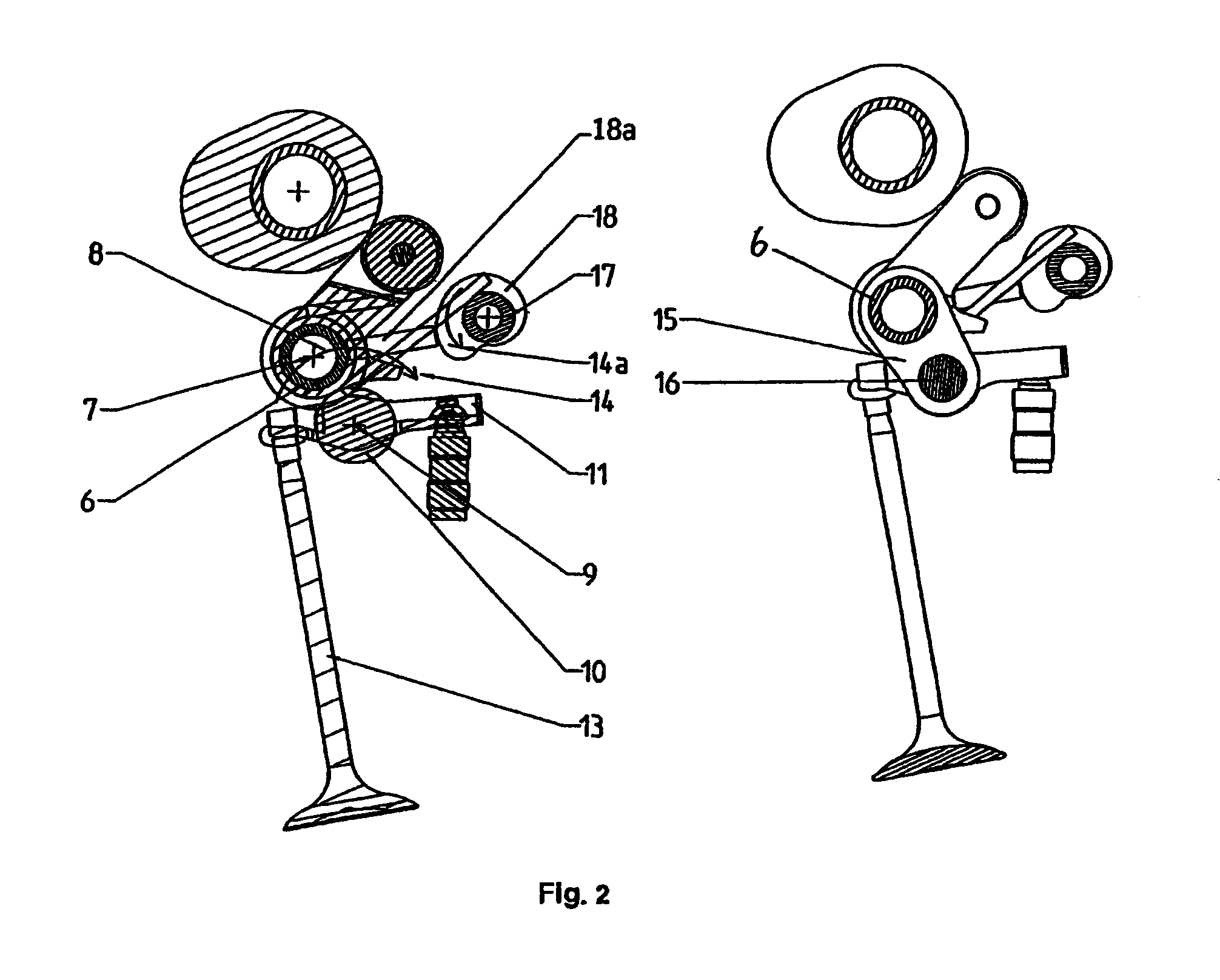Device for the variable actuation of the gas exchange valves of internal combustion engines, and method for operating one such device
a technology of gas exchange valve and variable actuation, which is applied in the direction of valve arrangement, machines/engines, mechanical equipment, etc., can solve the problems of difficult machined coulisses, insufficient contact between used housing materials, and noise and even damage, and achieves great accuracy
- Summary
- Abstract
- Description
- Claims
- Application Information
AI Technical Summary
Benefits of technology
Problems solved by technology
Method used
Image
Examples
Embodiment Construction
[0028]FIG. 1 shows a camshaft 1, which has a cam 2. The cam moves roller 3 at the end of connecting link 4. Connecting link 4 has a radial cam 5 which is composed of a rest area 5a and a lift area 5b. Connecting link 4 is mounted on a bolt 6 whose axis 7 is guided on an arc-shaped adjustment curve 8. The center of the arc-shaped adjustment curve 8 is on the axis 9 of the roller 10 of the driven element 11 which is supported through a joint 12 in a housing (not shown) and actuates valve 13. It can clearly be seen that adjustment of axis 7 on the adjustment curve 8 in the direction of arrow 14 has the consequence of reducing the opening angle and stroke of valve 13.
[0029]FIG. 2 shows an embodiment in which the bolt 6 or its axis 7 is guided on the arc-shaped adjustment curve 8 by positive connection to a pendulum support 15. Cylinder head-side joint 16 of pendulum support 15 or its axis coincides with the axis 9 of roller 10 of driven element 11. Adjusting shaft 17 holds cam disks 18,...
PUM
 Login to View More
Login to View More Abstract
Description
Claims
Application Information
 Login to View More
Login to View More - R&D
- Intellectual Property
- Life Sciences
- Materials
- Tech Scout
- Unparalleled Data Quality
- Higher Quality Content
- 60% Fewer Hallucinations
Browse by: Latest US Patents, China's latest patents, Technical Efficacy Thesaurus, Application Domain, Technology Topic, Popular Technical Reports.
© 2025 PatSnap. All rights reserved.Legal|Privacy policy|Modern Slavery Act Transparency Statement|Sitemap|About US| Contact US: help@patsnap.com



